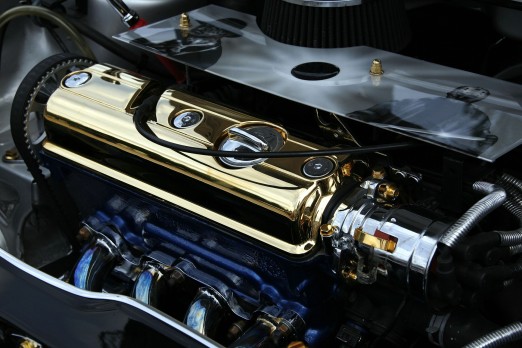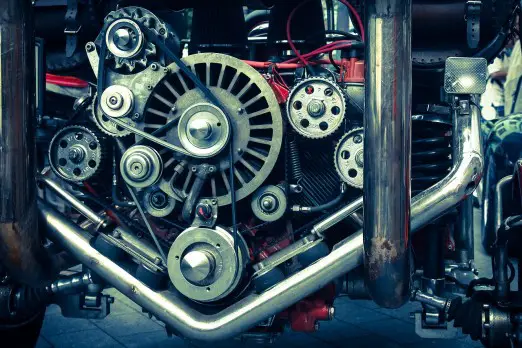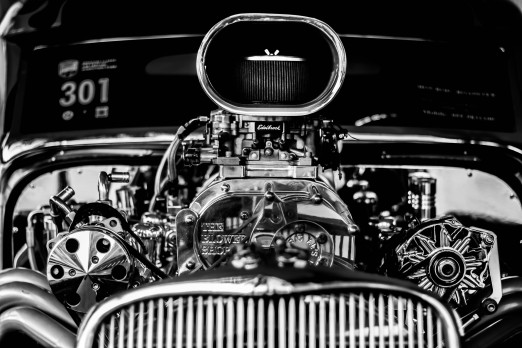Although it may not be the first thing that Subaru owners consider when considering normal maintenance, front differential fluid is essential to the smooth running and long life of their cars. The front differential, which transfers power to the front wheels, must be properly lubricated to perform at its best. We’ll dive into the world of Subaru front differential fluid in this extensive tutorial, covering the many available types, the importance of following manufacturer guidelines, and the warning indicators that it could be time for a fluid replacement.
The Role of Front Differential Fluid:
A Subaru vehicle’s front differential fluid is essential to maintaining the front differential’s smooth and effective performance as a vital powertrain component. To appreciate the significance of choosing the appropriate fluid type and adhering to a regular schedule for fluid changes, one must have a clear understanding of its function.

Power Distribution:
- Power transfer from the engine to the front wheels is handled by the front differential. This guarantees that every wheel may spin at a distinct pace, enabling seamless turns and the best possible handling of the car.
- A key part of the whole powertrain system, the front differential is used by Subaru vehicles with front-wheel drive and all-wheel drive to transfer power to the wheels.
Lubrication and Friction Reduction:
- The front differential works in an environment where heat and friction are produced by continually moving gears and bearings.
- By acting as a lubricant, the front differential fluid lowers friction between these moving components. The lifespan of the differential components and the prevention of excessive wear are dependent upon this lubrication.
Heat Dissipation:
- Heat is produced inside the front differential by the power transmission process and gear movement.
- The purpose of the front differential fluid is to absorb and disperse heat to keep the engine from overheating and to maintain the ideal operating temperature. For constant performance and to avoid premature wear, effective heat dissipation is essential.
Seal Protection:
- In addition, the fluid protects the internal components of the front differential from harm by sealing it off from impurities and moisture.
- The integrity of seals and the prevention of external factors impairing the front differential’s operation depend on maintaining the appropriate fluid level and quality.
Understanding Subaru Front Differential Fluid Types:
Selecting the proper front differential fluid for your Subaru has a direct impact on the drivetrain’s durability and performance. Owners of Subaru vehicles need to be cognizant of the diverse range of fluid varieties accessible, considering variables like those suggested by the OEM (Original Equipment Manufacturer), traditional vs synthetic alternatives, viscosity, and suitability for limited-slip differentials (LSDs).
OEM Recommendations:
- Owner’s manuals for Subaru vehicles have precise instructions about front differential fluid. Following these instructions is essential to preserving warranty compliance and optimal performance.
- OEM-recommended fluids are made by Subaru requirements, guaranteeing compatibility with the parts and design of the car.
Synthetic vs. Conventional Fluids:
- Particularly under harsh circumstances, synthetic front differential fluids provide benefits including increased lubricating qualities, resistance to oxidation, and greater thermal stability.
- Even though they are less expensive, conventional fluids cannot offer the same degree of protection and performance. They are still appropriate for regular driving situations, though.
Viscosity and Temperature Considerations:
- Different viscosity classes of front differential fluids are available; they are usually identified by numerals such as 75W-90. It is essential to comprehend these viscosity values to choose the appropriate fluid for the temperature.
- Higher viscosity ratings are intended for warmer climates, guaranteeing enough lubrication, while lower numbers are appropriate for colder climates, offering superior flow.
Limited-Slip Differential (LSD) Considerations:
- Specialized fluids are necessary for the proper operation of limited-slip differentials (LSDs) found in certain Subaru vehicles.
- Additives in front differential fluids compatible with LSD reduce slippage in the differential, improving traction and stability, especially in tight turns and difficult driving situations.
Off-Road and Performance Considerations:
- Owners of Subaru vehicles that participate in off-road activities or high-performance driving could find that their vehicle benefits from front differential fluids made specifically to endure harsh environments and higher strain.
- These fluids frequently have more anti-wear and heat resistance, providing the front differential with better protection in demanding situations.
Synthetic vs. Conventional Fluids:
The performance, lifespan, and dependability of your Subaru’s powertrain are directly impacted by the choice you make between synthetic and traditional front differential fluids. Before choosing, Subaru owners must know the distinctions between each model as each has advantages and factors to consider.
Advantages of Synthetic Front Differential Fluid:
- Superior Thermal Stability: Synthetic fluids are perfect for harsh driving situations since they are designed to endure greater temperatures without degrading.
- Resistance to Oxidation: Synthetic fluids have a longer service life and less sludge and deposit development because they are less oxidation prone.
- Improved Lubrication: Synthetic formulations reduce wear and friction on important components by improving lubrication.
- Cold Weather Performance: Low temperatures frequently allow synthetic fluids to flow more effectively, providing enough lubrication during cold starts.
Advantages of Conventional Front Differential Fluid:
- Cost-Effective: Conventional fluids are an affordable option for routine maintenance since they are usually less expensive than synthetic alternatives.
- Satisfactory for Standard Driving: Conventional fluids can offer sufficient lubrication and protection for daily driving and commuting.
- Availability: For Subaru owners who would like to change their fluids more frequently, conventional fluids are readily accessible and could be a good option.

Viscosity and Temperature Considerations in Choosing Subaru Front Differential Fluid:
Understanding viscosity and its relationship to temperature is necessary when choosing the proper front differential fluid for your Subaru. Viscosity, which is sometimes indicated by figures like 75W-90, is essential for maintaining the front differential’s correct lubrication and protection under a range of temperature circumstances. To help you decide, the following breakdown of temperature and viscosity factors is provided:
Viscosity Ratings:
- The resistance of a fluid to flow is measured by its viscosity. A “W” will frequently separate two digits in front differential fluid specifications (e.g., 75W-90).
- In freezing temperatures, the fluid’s viscosity is represented by the first number (e.g., 75). Lower values represent improved flow in cooler temperatures, resulting in more seamless initial functioning.
- The viscosity of the fluid at operating temperatures is indicated by the second number (for example, 90). Greater values signify a thicker fluid, offering superior defense at elevated temperatures.
Cold Temperature Considerations:
- Selecting a front differential fluid with a lower initial number (such as 75W) is essential in colder areas to provide enough fluid flow during cold starts.
- This guarantees that the fluid reaches important parts fast, offering protection and lubrication even at extremely cold temperatures.
- Increased wear at startup might result from using a fluid with insufficient cold-weather viscosity.
Operating Temperature Considerations:
- Understanding the viscosity rating’s second value, such as 90, is crucial to knowing how the fluid behaves at operational temperatures.
- Higher second numbers correspond to thicker fluids that do not thin down too much at higher temperatures.
- Under typical driving circumstances, selecting a front differential fluid with the right operating temperature viscosity guarantees sufficient lubrication and protection.
Consideration for Extreme Conditions:
- Selecting a front differential fluid with a higher working temperature viscosity may offer additional protection if you often drive in harsh situations, such as while hauling large loads, going on off-road excursions, or driving at high speeds.
- Certain fluids are designed to withstand harsh environments and provide improved wear resistance and temperature stability.

Limited-Slip Differential (LSD) Considerations in Subaru Front Differential Fluid Selection:
Choosing the right front differential fluid is essential for Subaru models with Limited-Slip Differentials (LSDs) to guarantee lifetime and optimum performance. The purpose of LSDs is to increase traction and stability, and how well they work depends on the fluid type. The following are important things Subaru owners whose cars with LSD should keep in mind:
Understanding Limited-Slip Differentials (LSDs):
- LSDs are engineered to impart unequal power distribution across the front wheels, hence augmenting grip in curves and difficult driving scenarios.
- LSDs use extra parts, such as clutches, or gears, to reduce the disparity in speed between the front wheels.
LSD-Compatible Front Differential Fluids:
- Specialized fluids containing additives to stop slippage between the clutches or gears are necessary for certain LSDs.
- Selecting a front differential fluid with the marking “LSD-compatible” guarantees that it has the additives and friction modifiers required to keep the LSD functioning properly.
Additives for Friction Modification:
- Friction modifiers, which provide the required friction between the LSD components, are frequently present in fluids compatible with LSD.
- In addition to preventing premature wear, these additives guarantee that the LSD operates as intended, distributing torque across the front wheels in the right manner.
Manufacturer Recommendations:
- For models with LSD, see the owner’s handbook and official Subaru advice. Subaru offers precise recommendations for choosing front differential fluid that will guarantee compatibility with LSD parts.
- Keeping the LSD operating efficiently and maintaining warranty compliance are two benefits of using the prescribed fluid.
Performance and Stability:
- Front differential fluids suitable with LSD help to increase stability when accelerating, particularly when one Tyre is experiencing less traction than the other.
- Improved LSD performance makes driving more pleasurable by enabling improved control in tight spaces and on difficult roads.
Frequently Asked Questions (FAQs):
Which differential fluid is used by Subaru?
For its cars, Subaru normally suggests using a synthetic front differential fluid of 75W-90.
What sort of oil is used in gearboxes in Subaru Foresters?
For their manual gearboxes and differentials, Subaru Foresters often use either Subaru Extra-S Gear Oil or a comparable 75W-90 GL-5 gear oil.
Which gear oil is ideal for differentials?
A suitable gear oil for differentials is often 80W-90 or 75W-90, which satisfies the GL-5 criteria.
Conclusion:
The choice of front differential fluid for your Subaru is an important one that has an enormous impact on the drivetrain’s overall performance and health. To ensure adequate lubrication and protection, whether using synthetic or conventional fluids, it is important to comprehend the effects of viscosity and temperature, particularly when it comes to Limited-Slip Differentials (LSDs). Subaru owners may improve traction, stability, and lifespan by following manufacturer guidelines and using the appropriate fluid for their driving situations. As a preventative precaution, routine maintenance—which includes frequent fluid changes—maintains the integrity of the powertrain and makes driving more dependable and comfortable.

